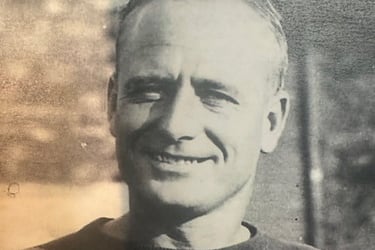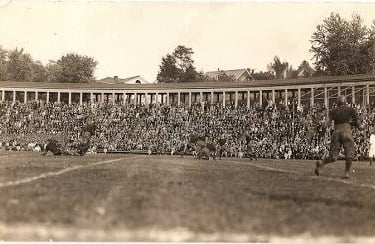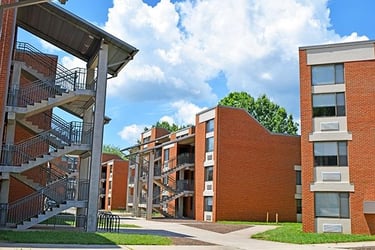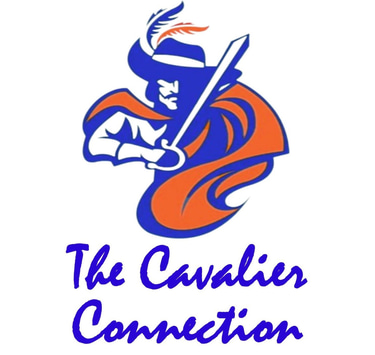Across the Grounds with Steve Brindle: Then and Now: How UVA’s Early Football Reforms Still Matter in the Age of CTE
This article explores the powerful connection between football’s evolving safety standards and the University of Virginia’s historic role in driving reform. From the tragic deaths of early players like George Phelan and Archer Christian to the groundbreaking contributions of Dr. William Lambeth and President Edwin Alderman, UVA helped lay the foundation for modern football rules that prioritize player safety. Tying past to present, the piece reflects on the dangers of head trauma, the rise of CTE awareness, and the university’s lasting legacy in the national conversation on protecting athletes—long before high-tech helmets and smart sensors became the norm.
Steve Brindle
7/18/20253 min read
One of my very favorite biographical sports movies was “Concussion”, from the expose “Brain Game”. It was a drama that played out in the courtroom as well as on the gridiron but sadly it took Mike Webster’s passing and subsequent autopsy by a Pittsburgh neuropathologist to discover what repeated head trauma can do to the brain. (What about MMA, boxing, Aussie football, and/or heading a soccer ball)?
Chronic Traumatic Encephalopathy (CTE) can only be diagnosed postmortem but, of the 376 NFL players autopsied, 345 showed evidence of CTE! Immense amounts of NFL owners’ money seemed always to trump on field combat concerns but this true story saw the fates reversed and safety became the increasing priority. Interestingly, 2 to 5 high school players succumb each year to this “2nd Impact Syndrome” perhaps because school districts with stretched budgets can’t afford advanced safety technology.
WILLIAM LAMBETH
Those championing change in the name of safety owe much thanks to two of UVA’s own, then-UVA President Edwin Alderman and his close friend and fellow football aficionado, Dr. William Lambeth. The latter, a North Carolina native born in 1867, the son of a Confederate veteran, graduated from Harvard, then UVA Medical School in 1892. He was the Professor of Materia Medica and Hygiene, an architect, AD, Director of Fayerweather Gym (predecessor to Mem Gym), and Superintendent of Buildings and Grounds. He worked on the faculty in one capacity or another for over 40 years.
Football rule changes were necessary. With no headgear yet in place, George Phelan of UVA Medicine died in a scrimmage versus UVA Law in 1895. In 1897, a University of Georgia player died in a game versus UVA. In 1909, UVA’s Archer Christian was trampled to death by Georgetown players. Even when helmets were introduced, they were fabricated with shoe leather that hardly could protect against serious brain damage.
Dr. Lambeth and President Alderman, who was on the Rules Committee, went to NYC where all the rules changes at the time were discussed and the UVA delegation was able to: convert halves into 4 quarters to provide more of a breather, institute 7 linemen across scrimmage to prevent “mass momentum plays”, ban players from pushing or pulling a ball carrier, and allow forward passes beyond the line of scrimmage.
LAMBETH FIELD
Lambeth Field, carved out of the 21-acre Rugby Dairy Farm, hosted its first football game in 1902. In 1913, the wooden grandstands were replaced by a classical 8,000-seat capacity that curved around the field in an arc with small field houses at each end. Lambeth himself led the campaign to raise the $50,000 to complete the project. One obvious usage problem stemmed from field time requirements for the 1st-year and varsity squads in football, baseball, lacrosse, and track. Due to spring sports, football could no longer use Lambeth. The fear that a javelin or discus might injure a gridiron star prompted Virginius Dabney to say that Lambeth “had been completely outgrown by 1930” and Scott Stadium construction was completed the following year. The structure is today known as Lambeth Colonnades and provides modern, AC, upperclassmen/women apartments with 25 buildings that accommodate 600+ students.
LAMBETH APARTMENTS
UVA football has certainly experienced its ebbs and flows over its 140-year history. The NIL and transfer portal today certainly blur the definition of “student athlete”. Many alumni are happy with the name tag of “Ivy of the South”, all the academic plaudits that continue to accumulate, and consider athletic teams a mere step above intramurals.
Others are avid sports junkies who have little attachment to the Academical Village. Hopefully, the largest group are those who recognize that a great University can fill their trophy case! William Lambeth, “Father of Virginia Athletics”, passed in 1944, too early a time to understand today’s smart sensors, designed to measure force absorption and impact monitoring but in force long enough to see the positive impact of simple rule changes.






